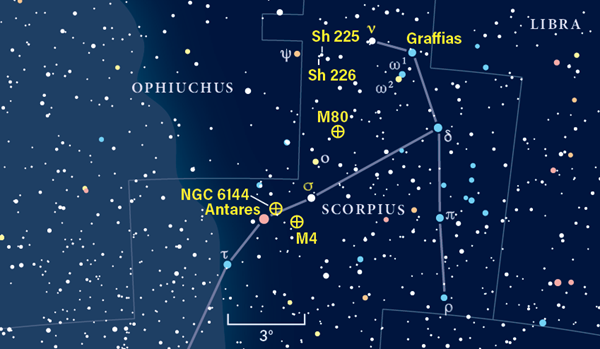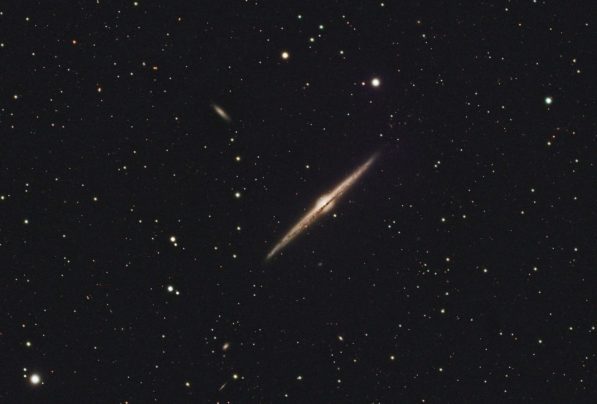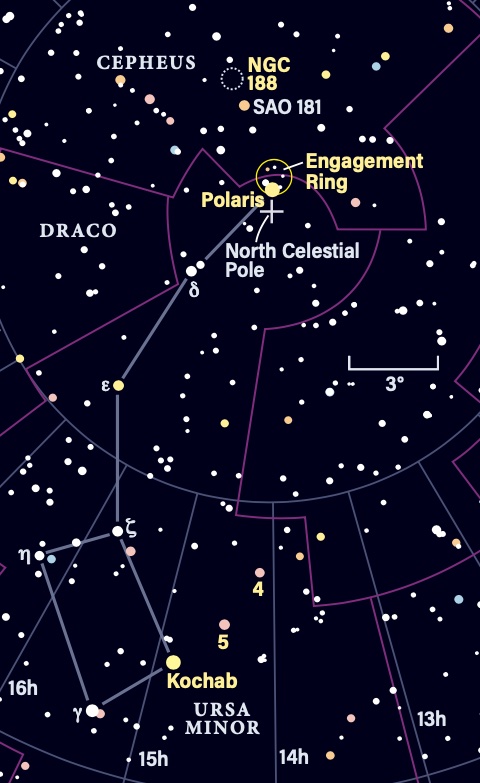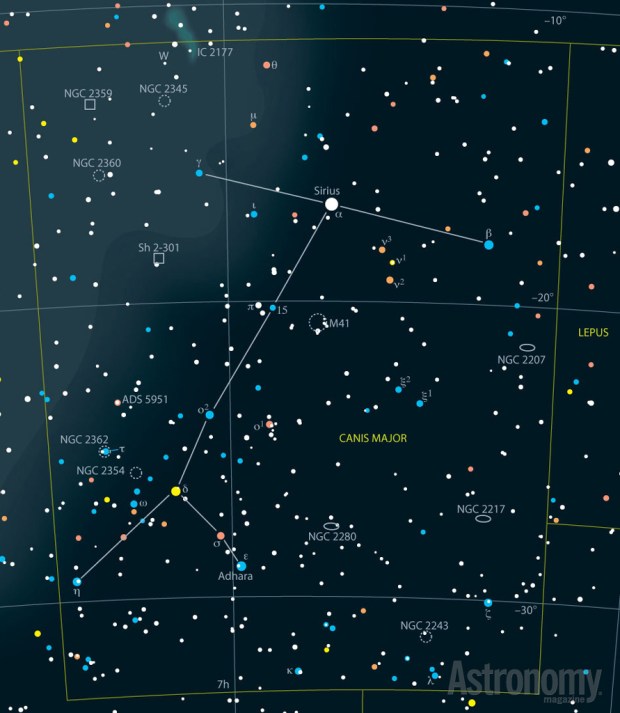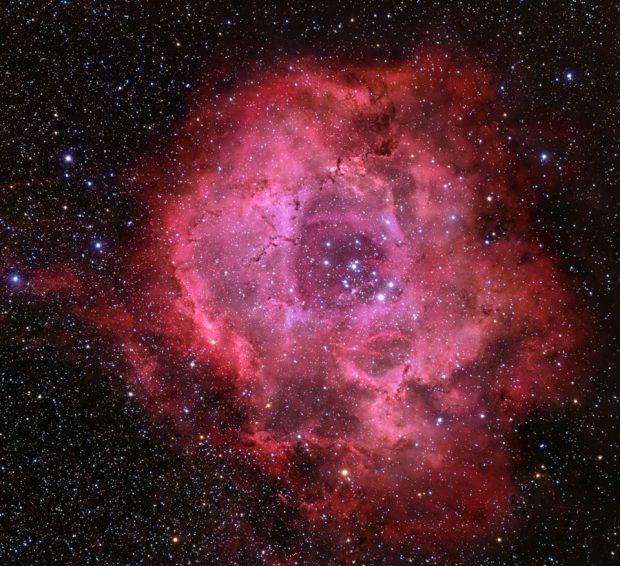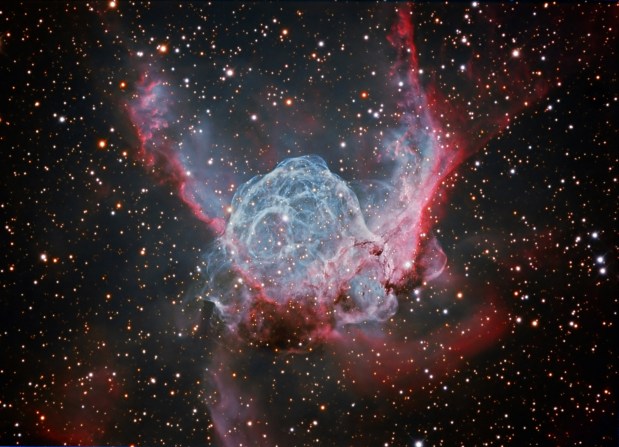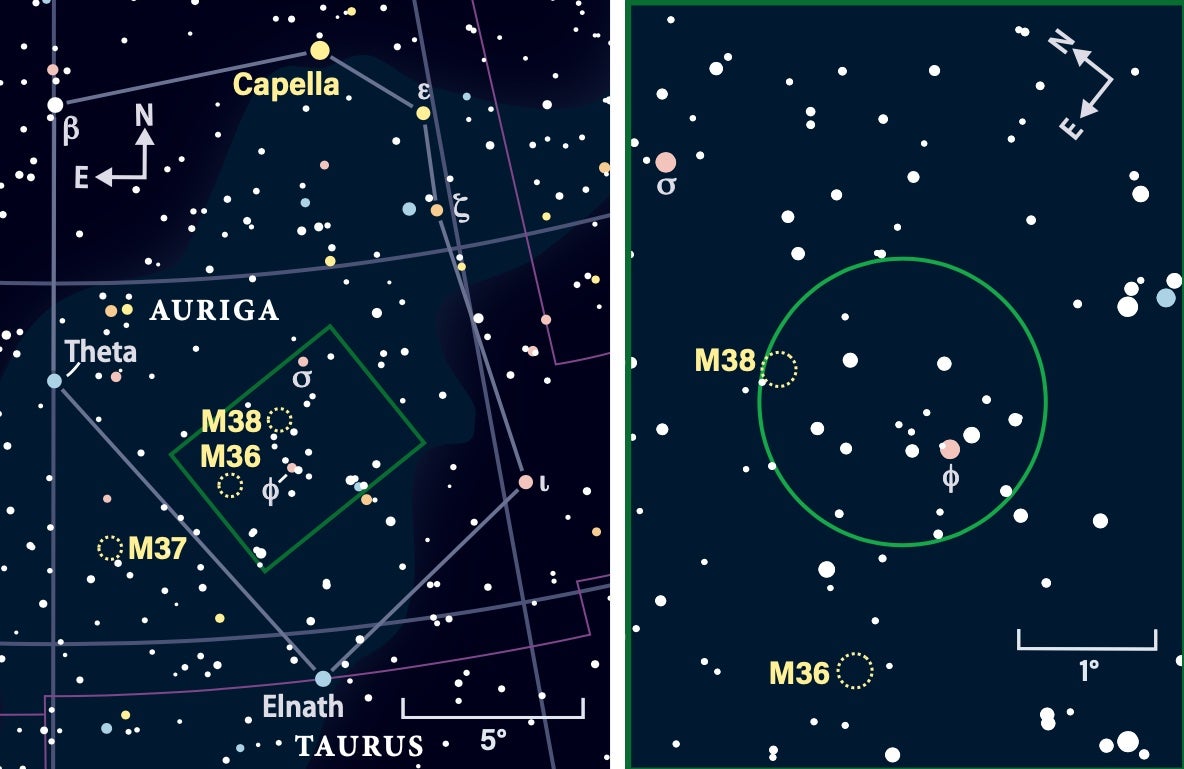We’ll begin with M4, the globular cluster a little west (right) of Antares. During a small-telescope survey of Messier catalog objects I conducted some years ago, I viewed M4 through a 4-inch rich-field reflector at 74x, noting that it appeared oval in shape and not very “globular.” With a 4.5-inch f/8 reflector at 152x, I perceived some resolution — not exactly unexpected, as M4 is one of the nearest of all globulars. Can you spot a distinctive band of stars bisecting the cluster, which was first seen by William Herschel in 1783?
Next, turn your scope to a spot ½° northwest of Antares. Here, we’ll find the 9th-magnitude globular cluster NGC 6144. It can be seen with low magnification, but a wide field will bring Antares into view. Use medium to high power to keep the bright star out of the way.
Antares also leads the way to yet another globular cluster — entry No. 80 in Messier’s catalog. To find it, perform a low-power search of the area midway between Antares and Graffias (Beta [β] Scorpii). In notes made during my small-scope Messier survey, I wrote that M80 was “Unresolved. Tends to show high concentration towards center.”
This part of Scorpius abounds in double stars, so much so that I featured it in the double-star column I wrote for Deep Sky Monthly in July 1979. Headlining the group is Graffias, a pair of magnitude 2.6 and 4.5 stars separated by 13.7″. With spectral classes of B0.5 and B2, they should appear snow-white. To me, however, the fainter member seems blue-green. See if you agree.
Up next is Nu (ν) Scorpii, a “double-double” I featured in this column a few years ago (“Civil War star,” June 2014). Through a common 2.4-inch refractor at a magnification between 30x and 60x, you’ll see two stars of magnitudes 4.4 and 6.6 that are a spacious 41.3″ apart. Switch to 150x with a 4-inch scope under ideal seeing conditions (or a 6-inch or larger if there’s a hint of atmospheric turbulence), and each of these stars is again doubled. The brighter has a 5.3-magnitude partner situated 1.3″ to its north, while the fainter is attended by a 7.2-magnitude star currently 2.4″ to its northeast.
A much easier double-double is Sh 225 and Sh 226 (“Sh” for the British astronomers James South and John Herschel, who cataloged these pairs in 1824). They appear as a tight pair of stars 1° immediately west (right) of Psi (ψ) Ophiuchi. Sh 225 consists of magnitude 7.4 and 8.1 stars separated by 46.6″, while Sh 226 is a closer (12.5″) magnitude 7.6 and 8.3 duo.
Next, we turn our scopes to Sigma (σ) Scorpii (magnitudes 2.9 and 8.4, separation 20.3″). Despite how far apart they are, the magnitude difference could make the secondary elusive in small scopes, so use averted vision. Because the companion is west of the main star, it should lead the way as they drift across your field of view.
If you’re up for a demanding visual challenge, see if you can spot the 5th-magnitude companion to Antares, just 3.2″ from the main star and more than 60 times fainter. To see it, you will need: a 6-inch or larger scope; as high a magnification as possible (300x isn’t too much); and, of course, optimum seeing conditions. As was the case with Sigma Scorpii, the lesser star is west of the primary and will precede it as the pair drifts across your field of view.
This concludes our Observing Basics look at Scorpius. If you want to dive deeper into the Scorpion, check out Phil Harrington’s article “The life and death of stars in Scorpius” in the May 2019 issue of Astronomy.
Questions, comments, or suggestions? Email me gchaple@hotmail.com. Next month: We celebrate International Observe the Moon Night. Clear skies!

